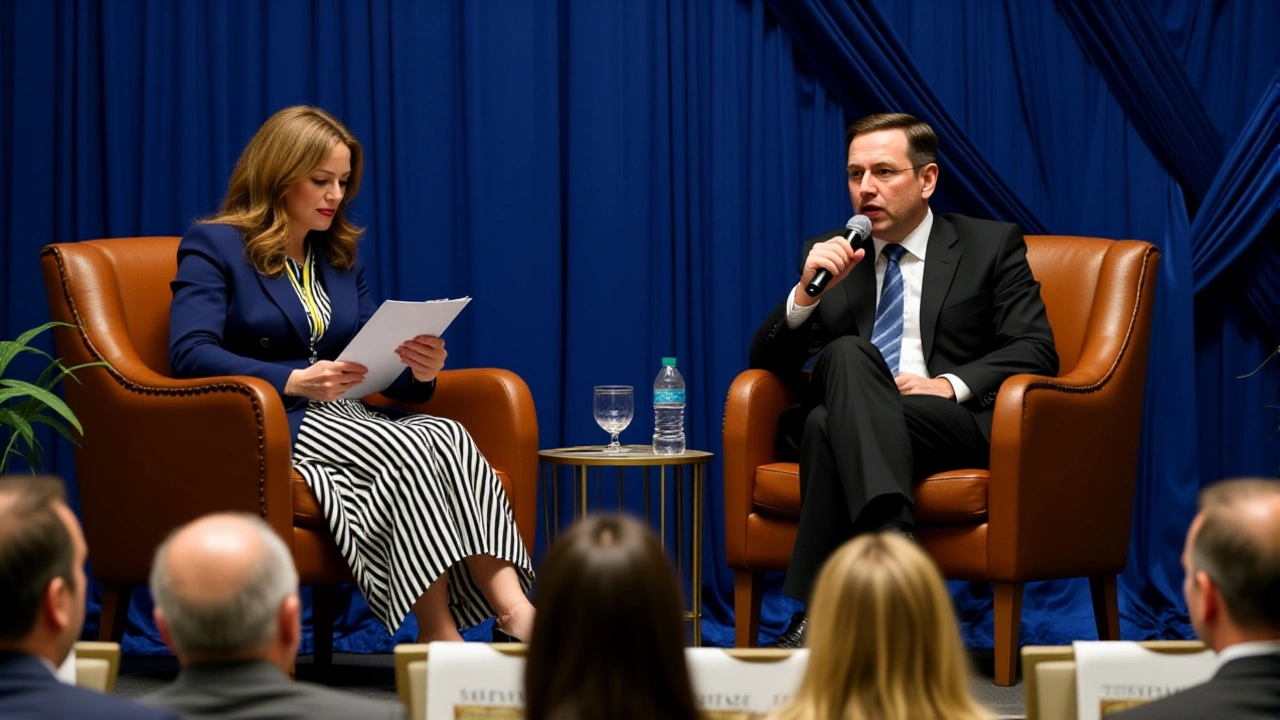On November 21, 2025, Microsoft shares closed at $477.00, up just 0.2% from their intraday low of $476.00, despite a $3.55 trillion market cap and a 34.66 price-earnings ratio that screams speculative fervor. Meanwhile, Apple saw its earnings forecast dip 1.1% to $1.74 per share for fiscal Q4 2025 — a subtle but telling sign that even the most resilient tech giant isn’t immune to the storm brewing in artificial intelligence spending. The catalyst? A fiery episode of VALUE: After Hours (S07 E40), broadcast from the studios of Acquirers Multiple, where financial analysts Tobias Carlisle, Julian Carlisle, and Seth Cogswell laid bare what they call the "AI Paradox": the more these companies invest in AI, the less cash they seem to have — and the more value leaks out to everyone else.
The AI Cash Trap
Here’s the thing: Microsoft is on track to hit $281.72 billion in revenue for 2025, growing at a 12.3% compound annual rate since 2015. Its gross profit margin? A robust 44.73%. But behind those numbers, the company is burning through billions on data centers, custom silicon, and AI research teams. Seth Cogswell, a tech valuation specialist, put it bluntly: "The life expectancy of these chips is a year and a half to two years." Translation? You’re not building infrastructure for longevity. You’re building it for obsolescence — and paying for it upfront.
Meanwhile, Apple is stuck in a bind. Its services division — iCloud, Apple Music, App Store — pulls in healthy margins. But hardware? That’s a cost nightmare. Rising component prices, supply chain friction, and slowing iPhone upgrades have squeezed its gross margins to just 30–32%. The result? Apple’s growth is increasingly reliant on services, but services can’t fully offset the capital drain of maintaining a global hardware empire.
The Value Gap
The real shocker? The companies using AI aren’t paying for it. Startups, retailers, hospitals, even local governments are tapping into Microsoft’s Azure AI and Apple’s on-device models — and reaping massive efficiency gains. But who foots the bill? The platforms themselves. "It’s a massive value gap," Tobias Carlisle said. "The users get the benefit. The providers get the balance sheet headaches."
Think of it like electricity in the 1920s. Power plants built the grid. Factories didn’t pay for the wires — they just plugged in and got cheaper production. Today, AI is the grid. And the companies building it are the ones getting stuck with the power bill.
Depreciation Is Coming — And It’s Loud
What the market isn’t pricing in? The depreciation. Amortization. The inevitable hit to the income statement.
"We’re just not paying back the AI spend," Cogswell warned. "The costs are sitting on the balance sheet now — but they’re going to run through the income statement soon. And when they do, the numbers are going to look terrible."
That’s not theoretical. In 2024, Microsoft spent over $20 billion on AI infrastructure. That’s more than the entire annual revenue of Netflix in 2018. And while the company spreads that cost over five years for accounting purposes, the cash outflow is immediate. The market is betting that future revenue will justify it. But what if it doesn’t?
Dotcom 2.0?
Tobias Carlisle didn’t mince words: "It’s entirely possible we go through a dotcom-style crash. We’re just too far ahead of ourselves."
He’s not alone. The parallels are eerie. In 2000, investors poured money into companies with no profits, no path to profitability, and often no product. Today, they’re pouring money into AI platforms with no clear monetization path — but with sky-high valuations based on future potential. The difference? Back then, it was websites. Now, it’s transformer models and quantum-scale compute clusters.
"Consumer surpluses are a thing," Carlisle added. "It’s entirely possible AI creates more value for users than it captures for shareholders."
That’s the existential crisis: AI might be the most transformative technology since the internet — but the companies building it may not be the ones who profit from it.

What’s Next?
The next 12 to 18 months will be decisive. If interest rates stay high, cash burn becomes unbearable. If a recession hits, corporate tech spending dries up — and suddenly, those $20 billion data center bets look like white elephants. If cloud adoption slows, Microsoft’s growth engine stalls. If iPhone sales don’t rebound, Apple’s margins keep eroding.
And here’s the kicker: Microsoft and Apple are still the best-positioned players. Smaller AI startups? Many are already running on fumes. Venture funding has dried up. The real carnage may come from the periphery — but the giants won’t escape unscathed.
The Bigger Picture
This isn’t just about stocks. It’s about who controls the future. If AI infrastructure becomes a public utility — like roads or electricity — then governments may step in to regulate pricing. Or worse: nationalize it. The U.S. and EU are already debating AI licensing, data sovereignty, and open-access mandates. The companies that built this tech may end up as mere contractors.
"Half of the growth we’ve experienced this year is strictly due to..." Cogswell trailed off, then added: "It’s a lag. We’re seeing the tail end of the boom. The real test is coming."
For now, investors are piling in. Trading volumes for Microsoft hit 25.14 million shares daily. But history shows: when the market’s betting on the future, the present often pays the price.
Frequently Asked Questions
Why are Microsoft and Apple’s valuations considered risky right now?
Despite strong revenue growth, both companies are spending billions on AI infrastructure with no guaranteed return. Microsoft’s P/E ratio of 34.66 and Apple’s declining earnings forecasts suggest markets are pricing in future AI profits that may not materialize. Depreciation of hardware and data centers will soon hit earnings, potentially triggering a valuation correction.
What does "cash burn" mean in the context of AI investments?
Cash burn refers to the rate at which a company spends its cash reserves on operations without generating equivalent revenue. For AI, this means spending billions on data centers, chips, and research teams — but not yet seeing proportional returns. Microsoft spent over $20 billion on AI infrastructure in 2024 alone, far exceeding its AI-related revenue.
How is Apple’s business model different from Microsoft’s when it comes to AI?
Apple relies on hardware sales for the bulk of its revenue, which face rising costs and slowing upgrades. Its AI efforts are mostly embedded in devices (like Siri and on-device processing), limiting direct monetization. Microsoft, by contrast, sells AI as a cloud service via Azure, creating recurring revenue — but at the cost of massive upfront infrastructure spending.
Could AI lead to a market crash similar to the dotcom bubble?
Yes, according to analysts like Tobias Carlisle. The dotcom bubble was fueled by speculative valuations based on unproven business models. Today, AI valuations are similarly based on future potential rather than current profitability. If corporate spending slows or AI adoption plateaus, the disconnect between price and earnings could trigger a sharp correction.
Who benefits the most from AI right now — the tech giants or their customers?
Customers. Startups, hospitals, and small businesses are using Microsoft’s and Apple’s AI tools to cut costs and boost productivity — often for free or low cost. Meanwhile, the tech giants bear the expense of building and maintaining the infrastructure. This creates a "value gap," where users capture most of the economic benefit, while providers shoulder the financial risk.
What happens if AI doesn’t deliver the promised productivity gains?
If AI fails to significantly boost corporate efficiency or revenue, the $1 trillion+ spent on infrastructure will look like a massive misallocation of capital. Investors may flee, earnings estimates will be slashed, and valuations could collapse. Even Microsoft and Apple, with their strong balance sheets, would face pressure to cut spending — slowing innovation and potentially triggering layoffs in AI divisions.


